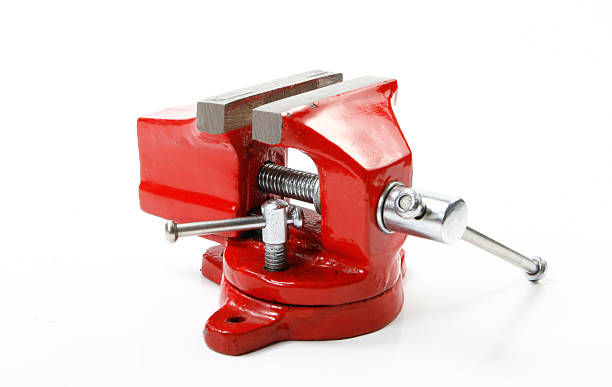
An inventor's vise, also called a machine vise or, more commonly"a "bench vise," is employed to compress metal, rather than clamping wood. Its primary function is, however, to keep the metal in place when cutting and filing.
The vise invented by the inventor can also be known as a machine vise or"benchvise" or "benchvise" and is employed to compress metal, instead of clamping wood. It's designed to hold the metal during filing and cutting. Cast iron is by far the most well-known material, however cast steel as well as malleable cast iron are also common. To learn more details about self-centering vise, you must check out Quick change systems site.
What exactly is a machine vise You might would like to know?
A clamp with a huge base and parallel jaws of iron. Similar to a metalworking vise. A machind or bench vise. A clamp that is attached to a workbench; it includes two jaws for securing the workpiece.
What is the secret behind an excellent machine vise?
A good machine vise will have an extremely sturdy structure and will typically be composed out of cast iron. If the jaws are shut and the machine is operating smoothly and reliably and the piece of work is placed on the bed by a wedge mechanism.
The jaws can be prevented from being lifted when they're bent.
Clean the table or tram the machine for cleaning:
Make sure you clean the table thoroughly of any chips that may be on it before making any type of grip on your machine table. It is essential to make sure that the chip does not get stuck in the vise, or on the table.
Mounting the vise with a nut and bolt and securing it to the T slot table, if you can, is a good idea.
When trimming a grip the lower lip of the vise should be brushed by the index finger (you prefer the jaw that is set, not the jaw that moves) to allow the position of the self-centering vise to be adjusted until the wave reveals that the upper part of the vice is parallel to its axis. Set jaw not a movable jaw is what you're seeking.
Parallels and Jaw Steps:
Supposing the vise has been installed and trimmed properly, the next question is how it is utilized. The majority times it is best for jaws that are high to ensure that the workpiece is kept at an appropriate level.
This is done to serve two purposes one is to ensure that the work piece can be accessed, and second so that the grip be more secure and stable when more of the work piece is secured. In simple terms, when less of the work piece is gripped and secured, there is less space for just a trip or other irregularities to affect what happens.
The Vise Jaw is flexible and can be utilized in a variety of ways. It is important to remember that jaws are able to be placed inside or outside of the usual jaw mounting locations. When the jaws are installed externally, the vice can hold a much larger workpiece than when they are mounted internally.
Multiple vises, jaws that span, and matching vises:
If you're trying to get the most out of your equipment, you need to maximize the space available by your table, just as the saying is. It is common practice to put a variety of vises onto a milling machine's table, as most machine tables are large enough to allow for this.
Machines can be made of more parts with the more vises you can have before the controller needs to stop it. As that long as you've got enough room, you're set.
It's helpful to keep the vises from multiple machines dimensionally consistent within a specified range of errors. So, it doesn't be a problem if the vises aren't in the same order when you're trying to replicate a setup.
Double-station Machine vise
If you now have three or four vises scattered across your factory table This means you've effectively made the most of the X-Axis. But it is possible that the Y-Axis can be used more effectively with double station vises:
Double station vises can hold two pieces at once and are like having two vises in a normal double station.
A set of double vises is a good idea to expand the number of parts you are able to work on simultaneously on the table of your mill.
Other solutions for holding work could be available:
Vises are not enough to do much. It is possible to use double station vises, and move jaws about, or multiple vises.
It is also possible to use vises to secure other equipment for workholding. In order to reverse jaws' movement direction on an mc power vise All you have to do is place a sine vise inside of it.
Quick change jaws:
I hope that you are getting the idea that Milling Vises to Personalized Jaws can be a viable method for holding work. Because of its effectiveness, this Work holding type is utilized for a large quantity of work.
It can take time to create custom jaws. Once they are done the jaws are stored in boxes until they are able to be used again.